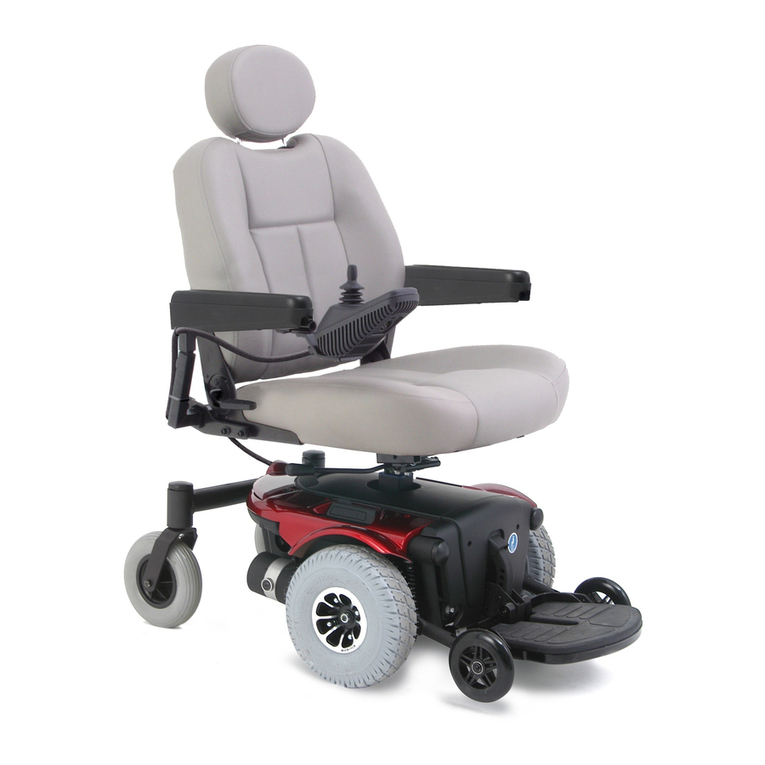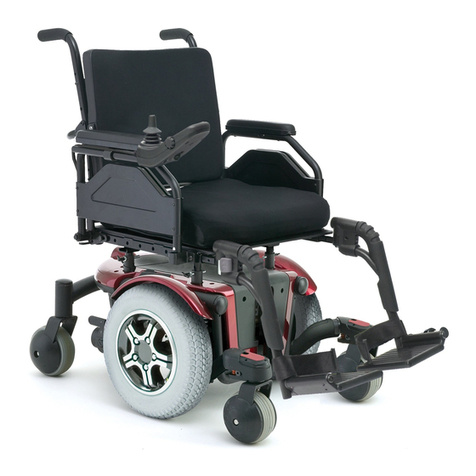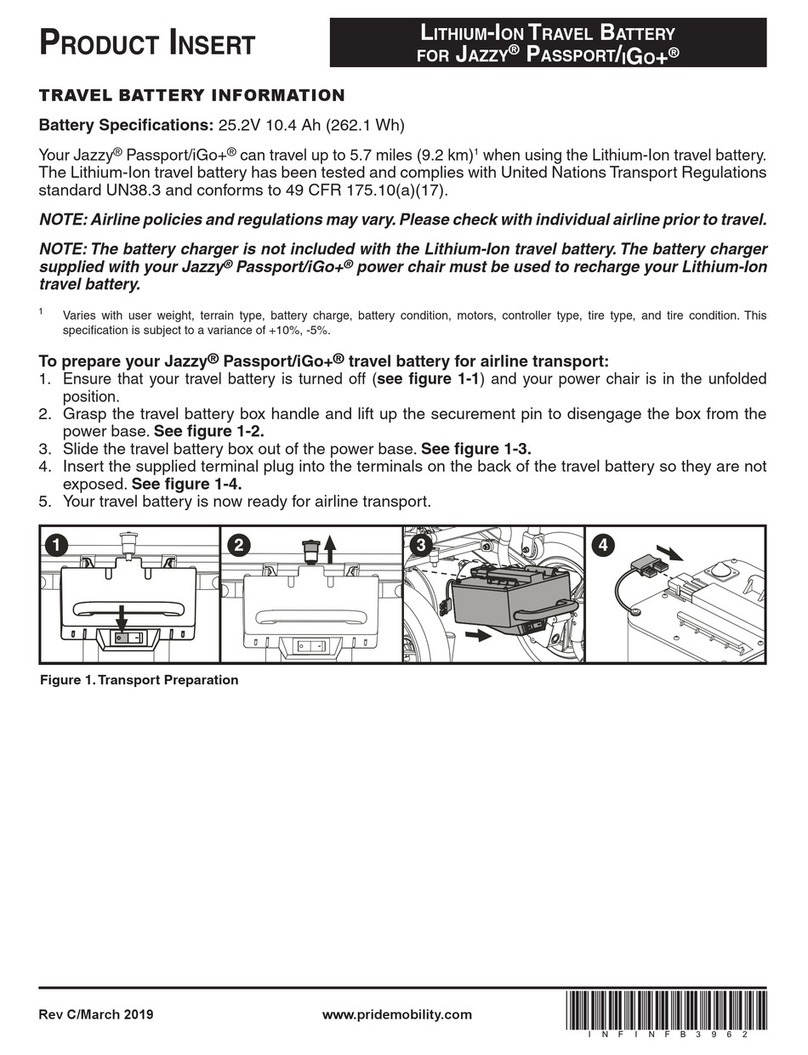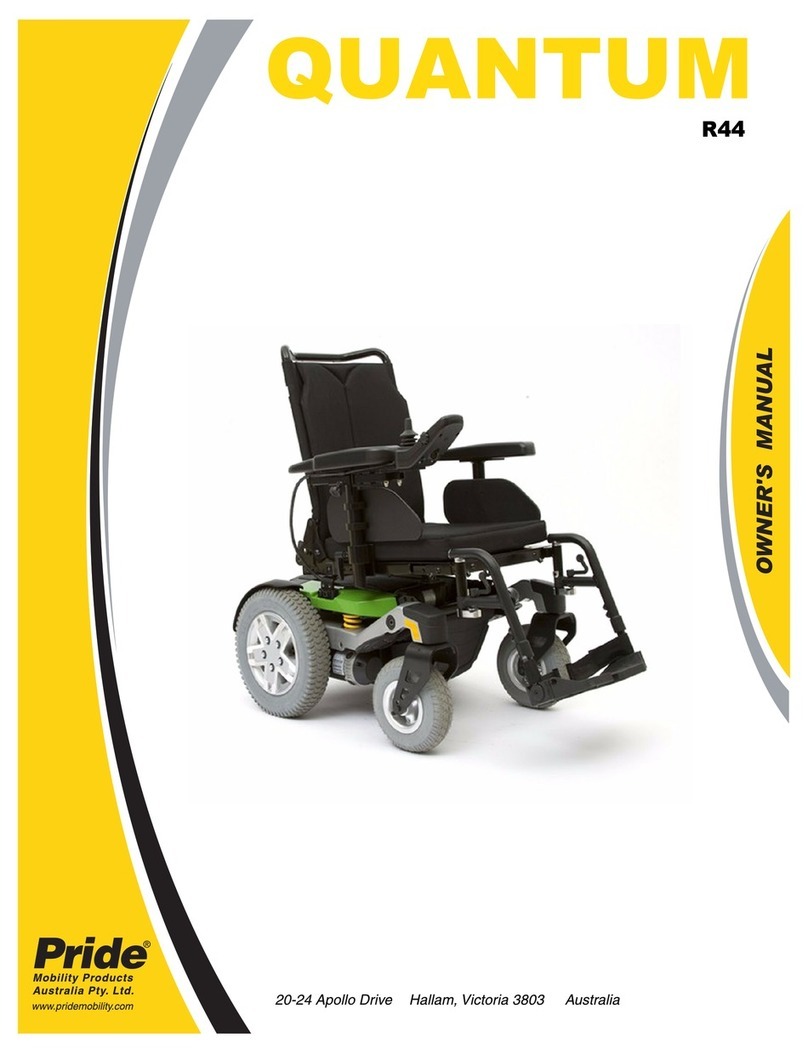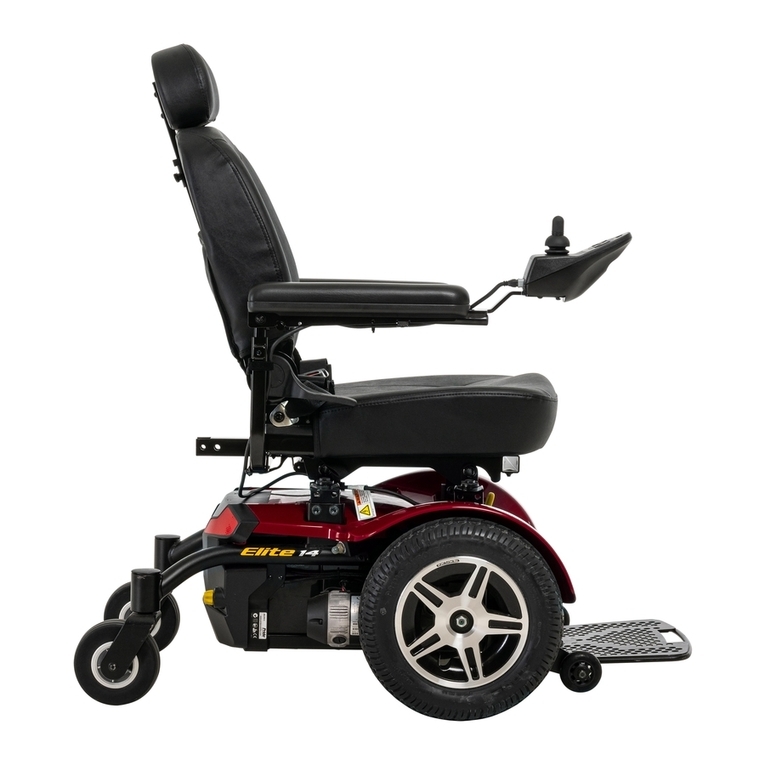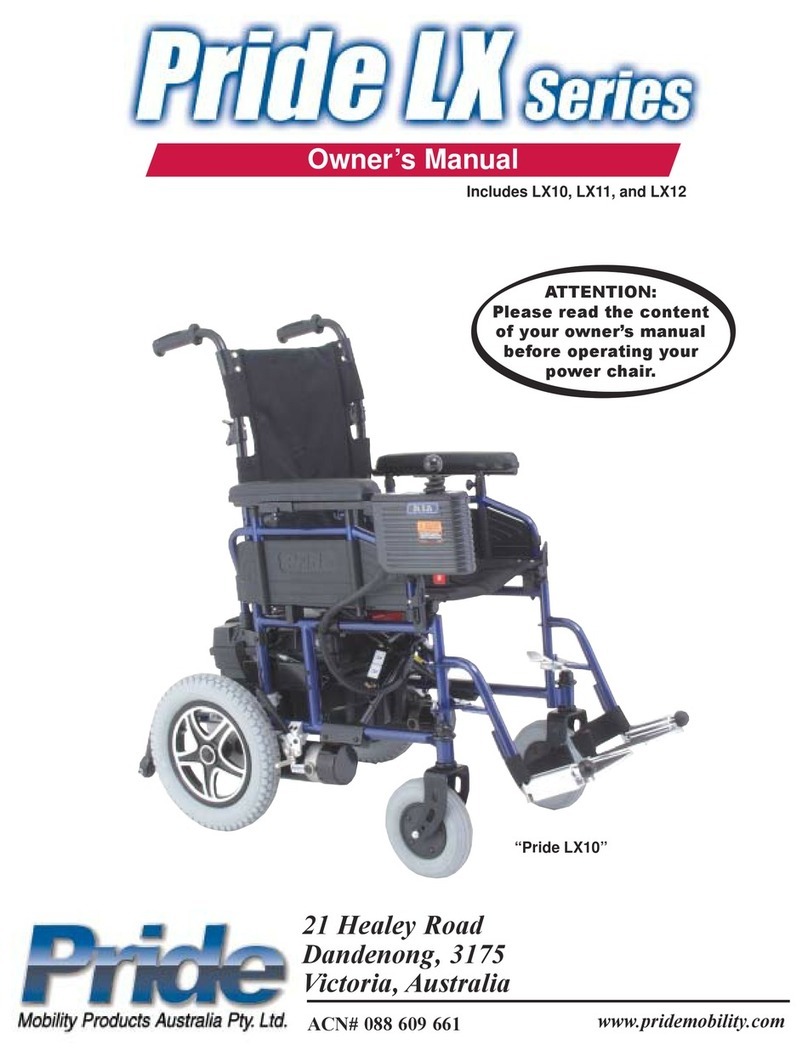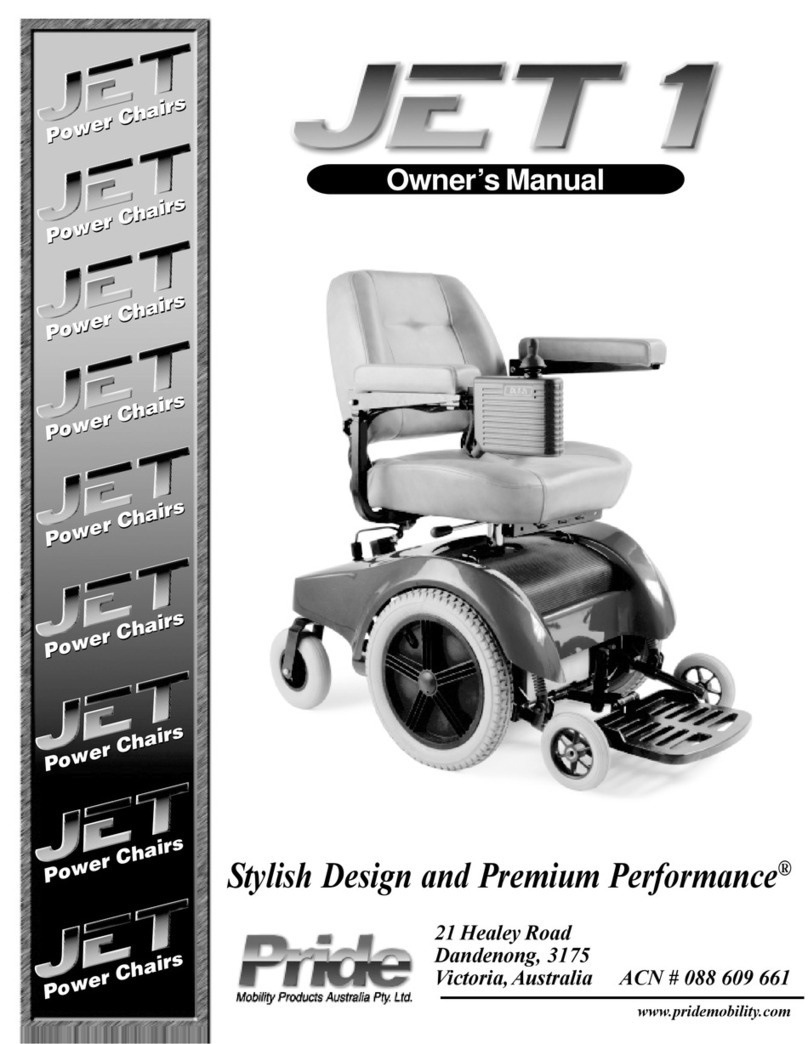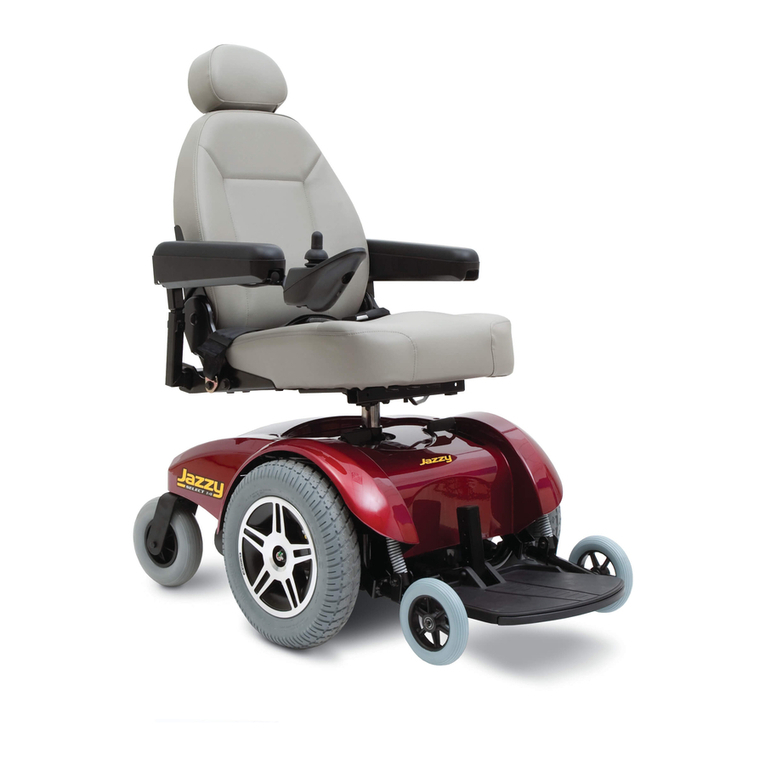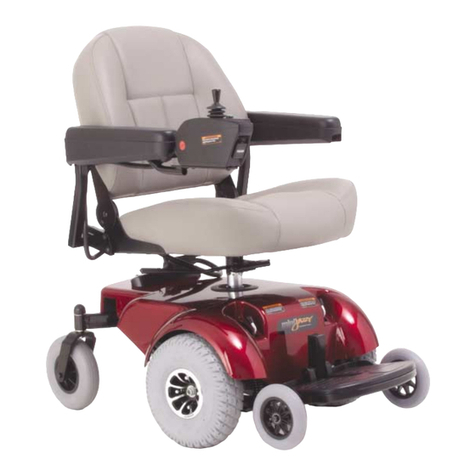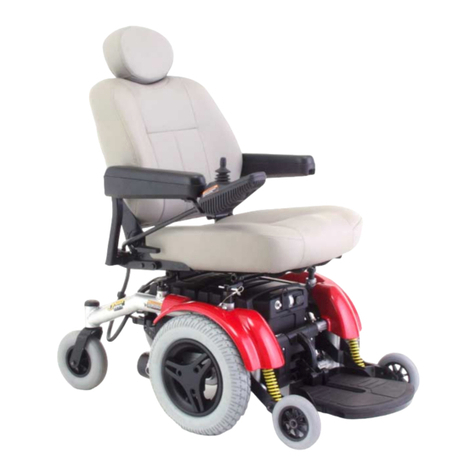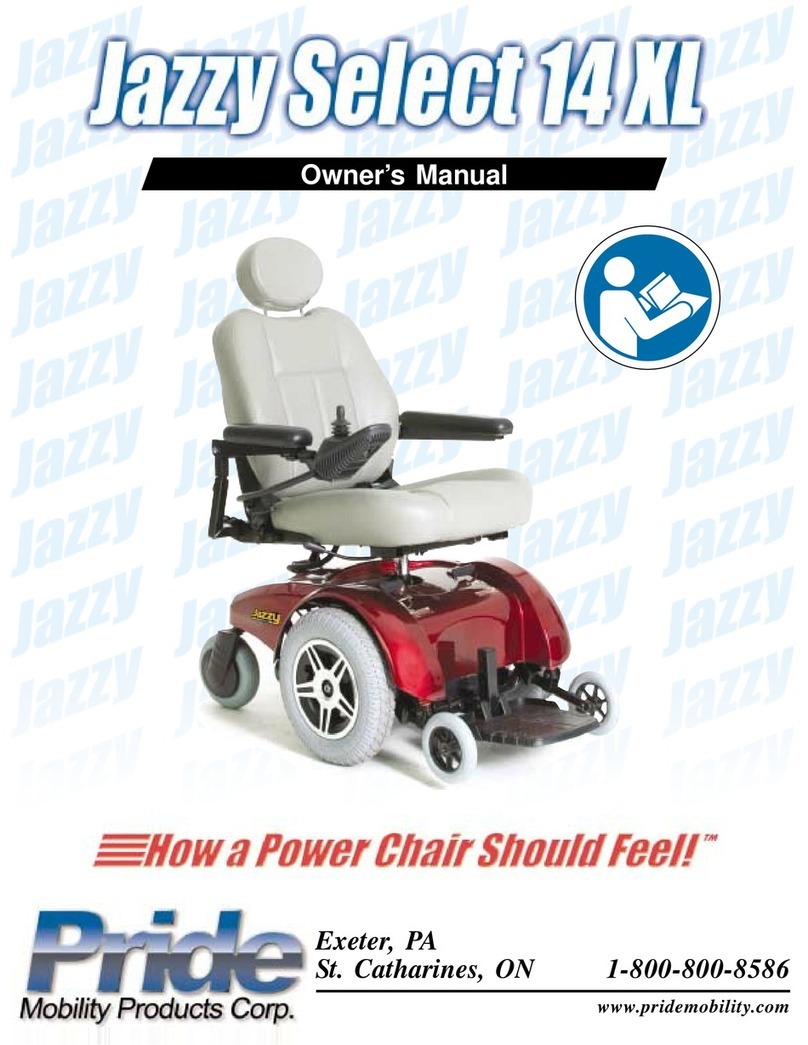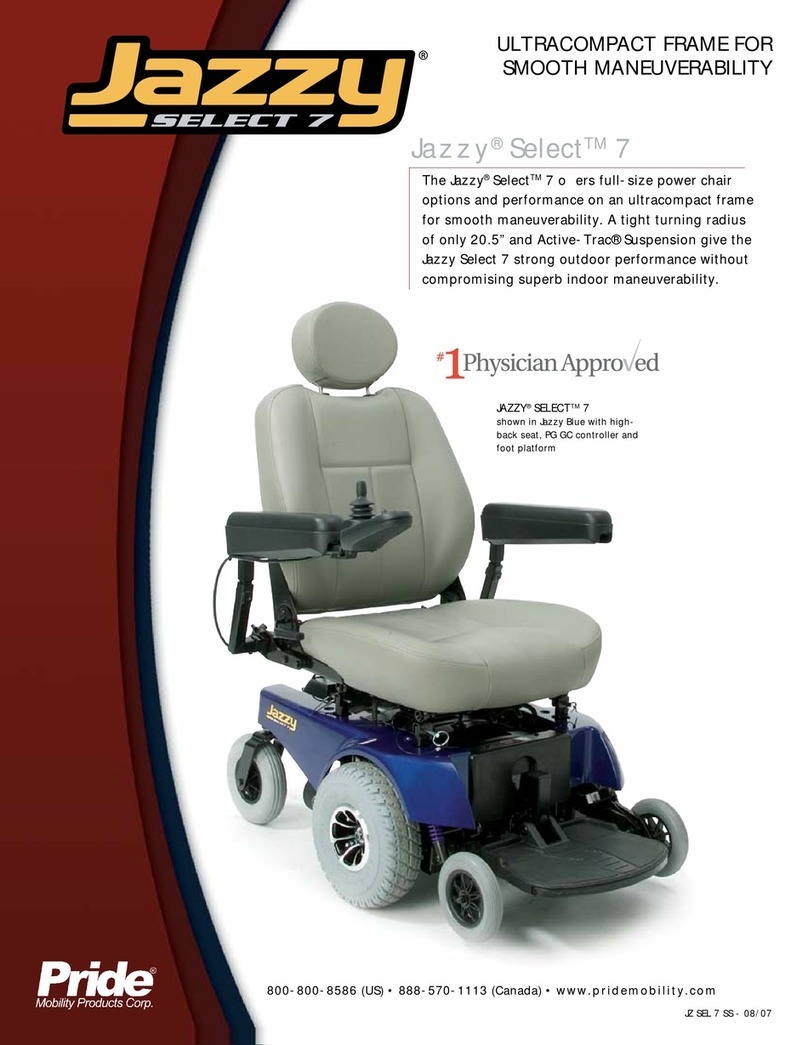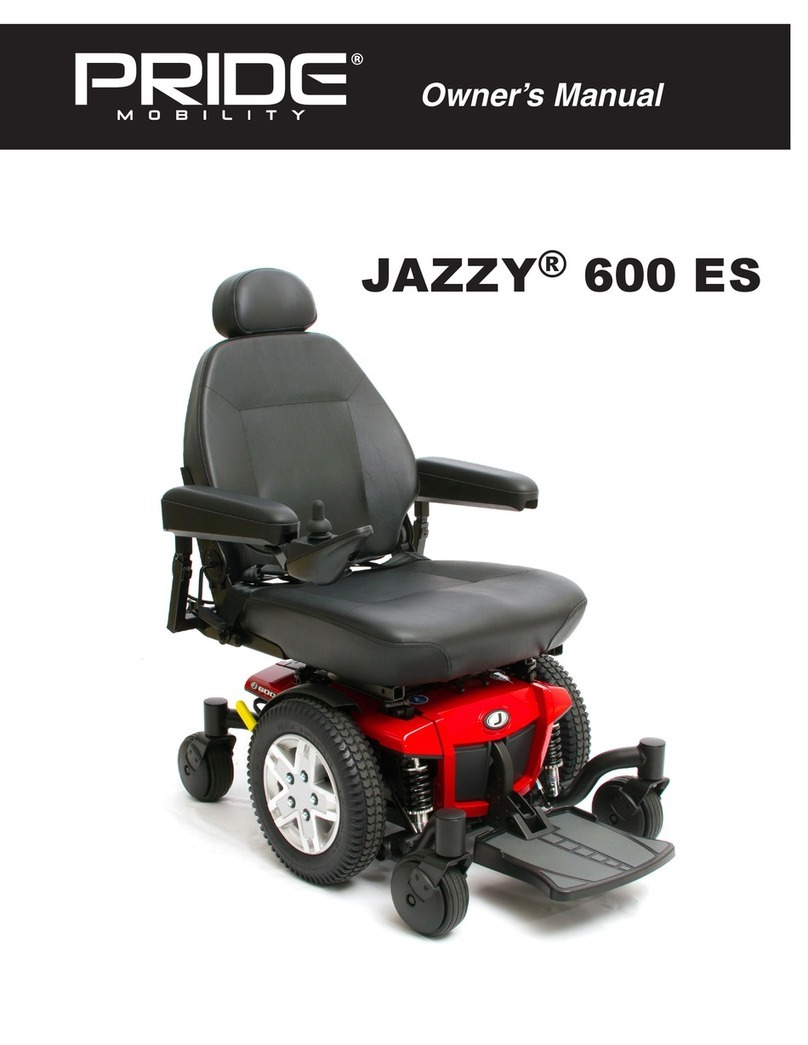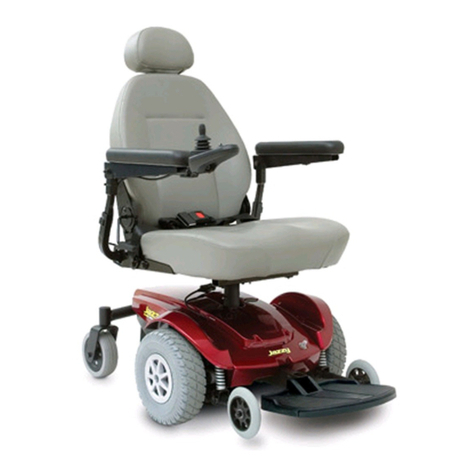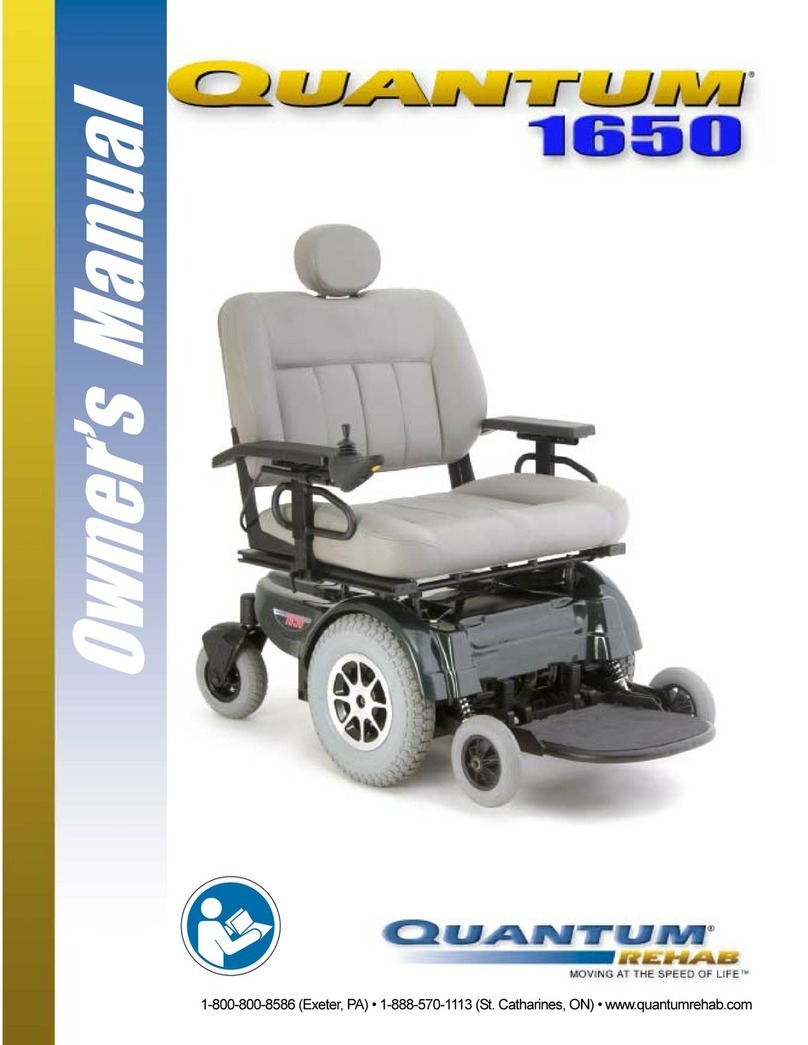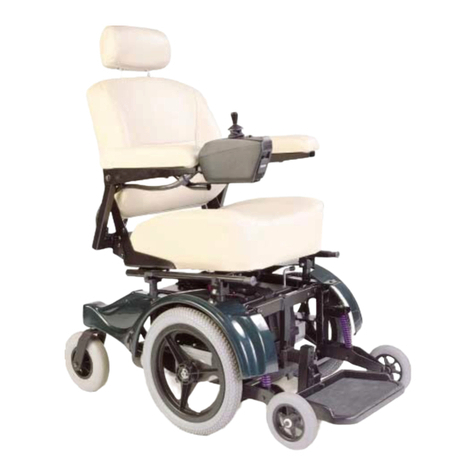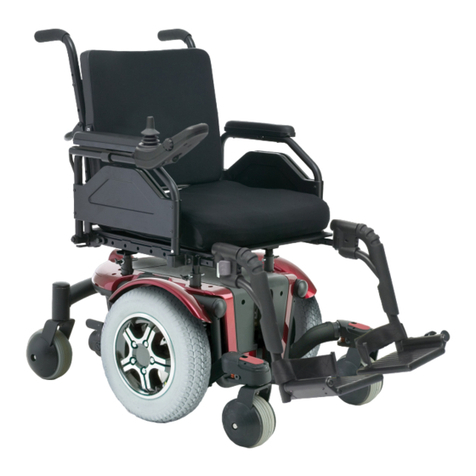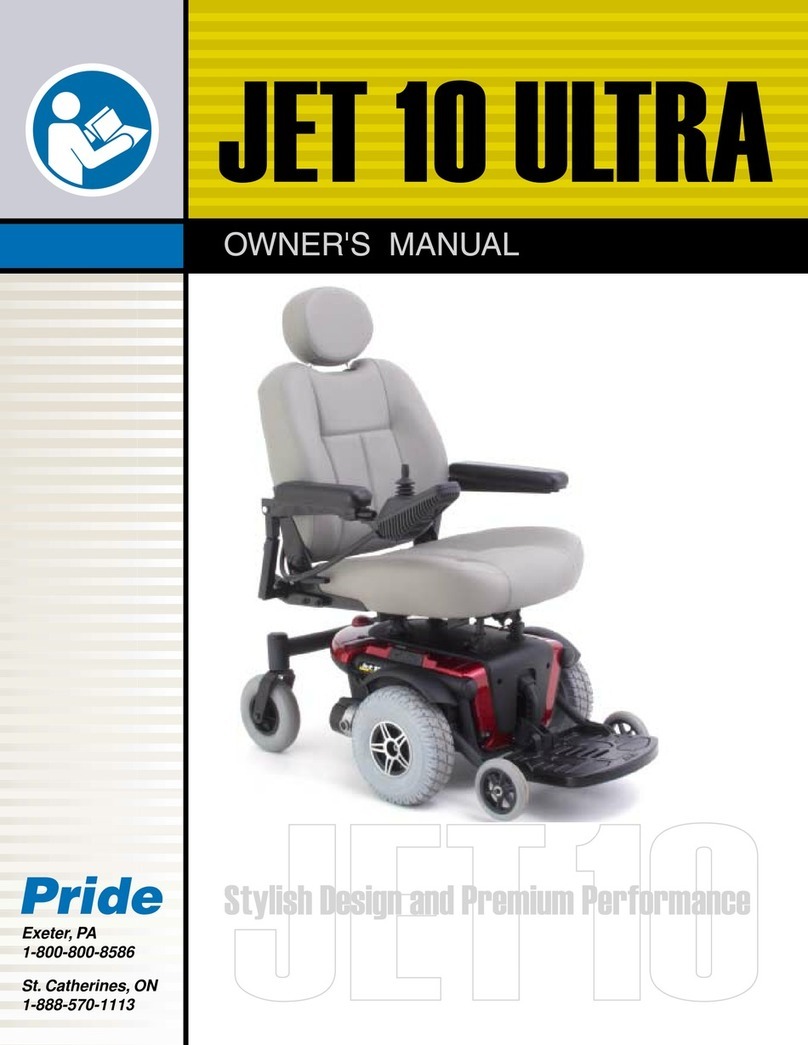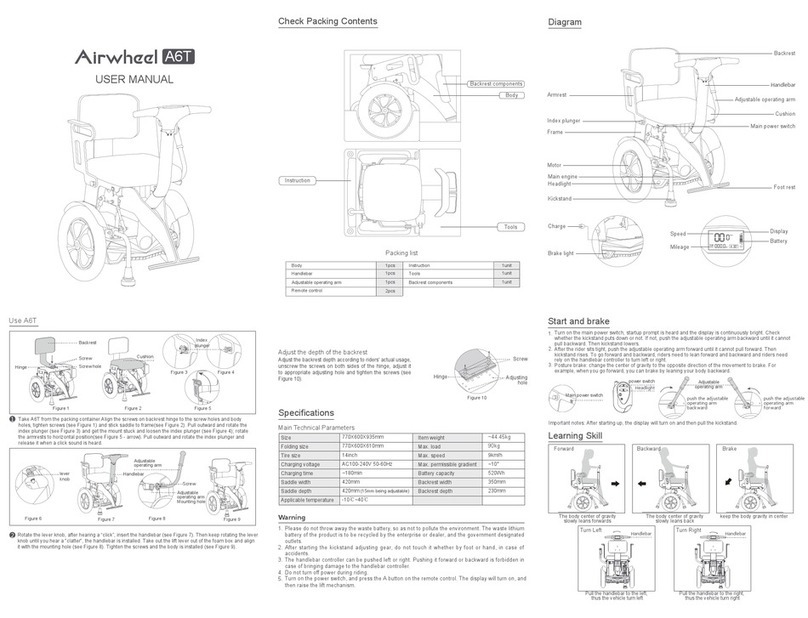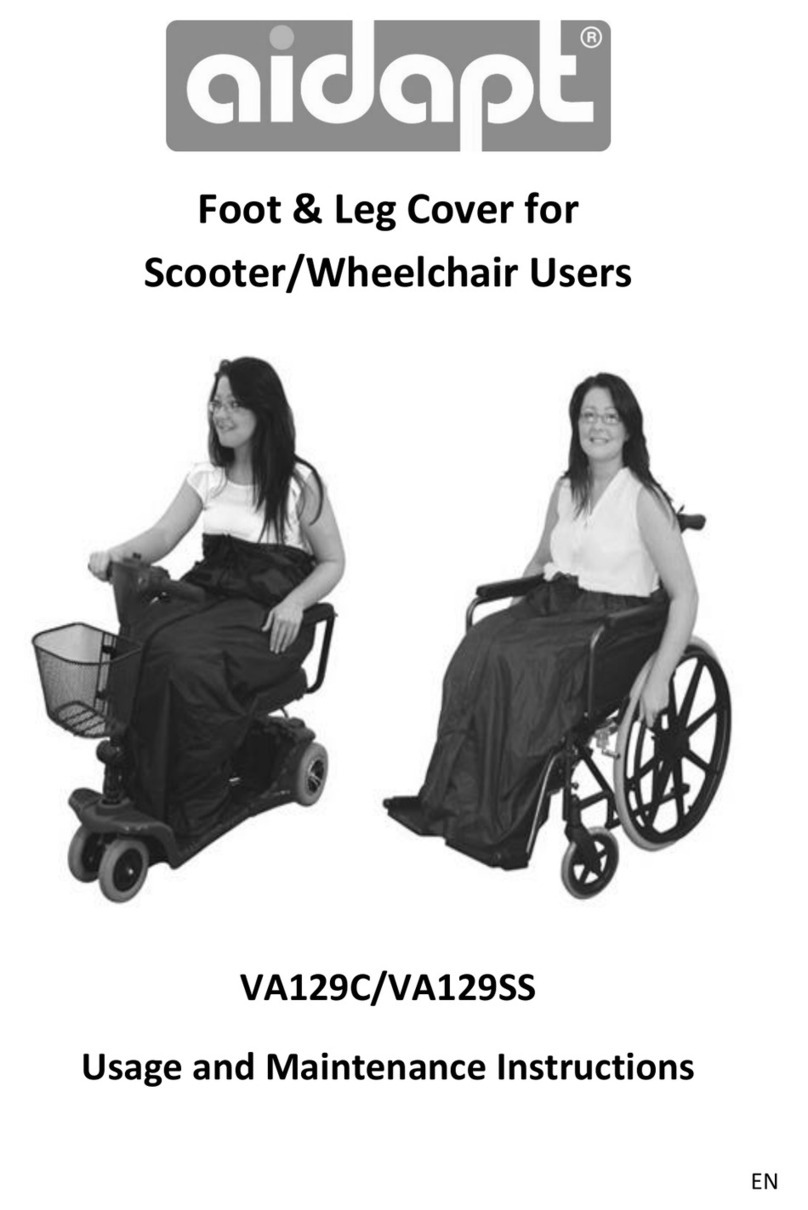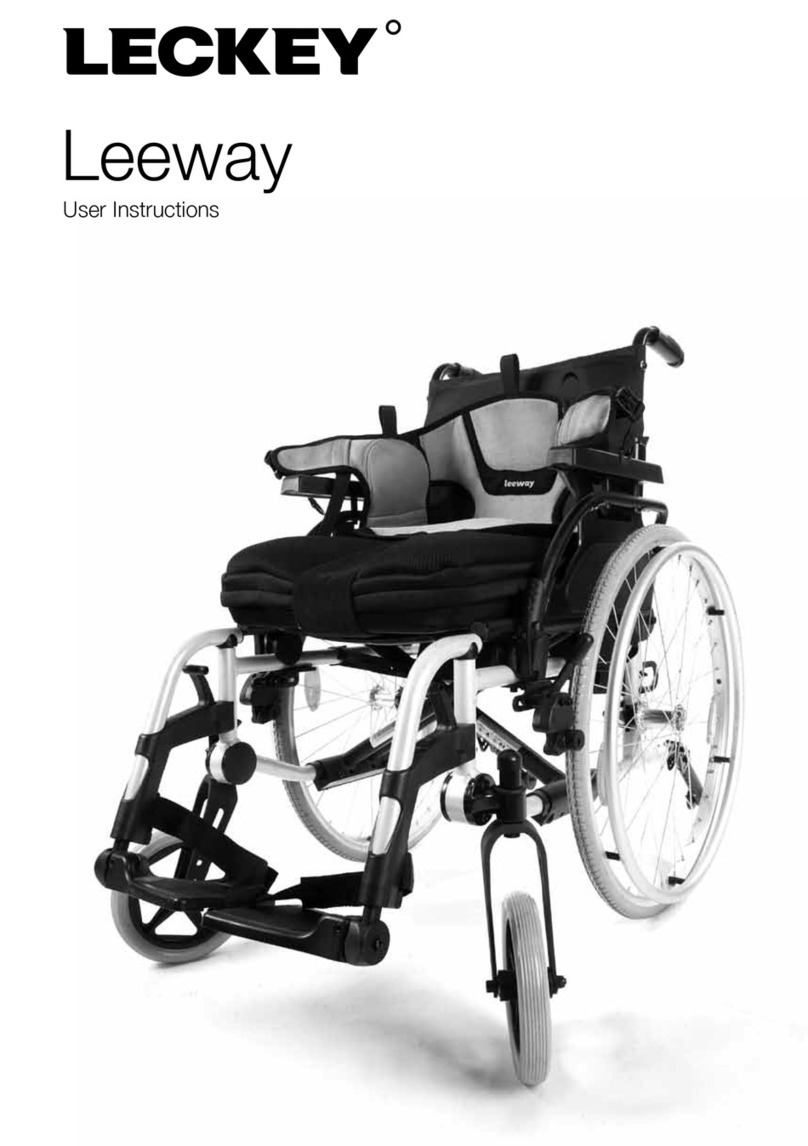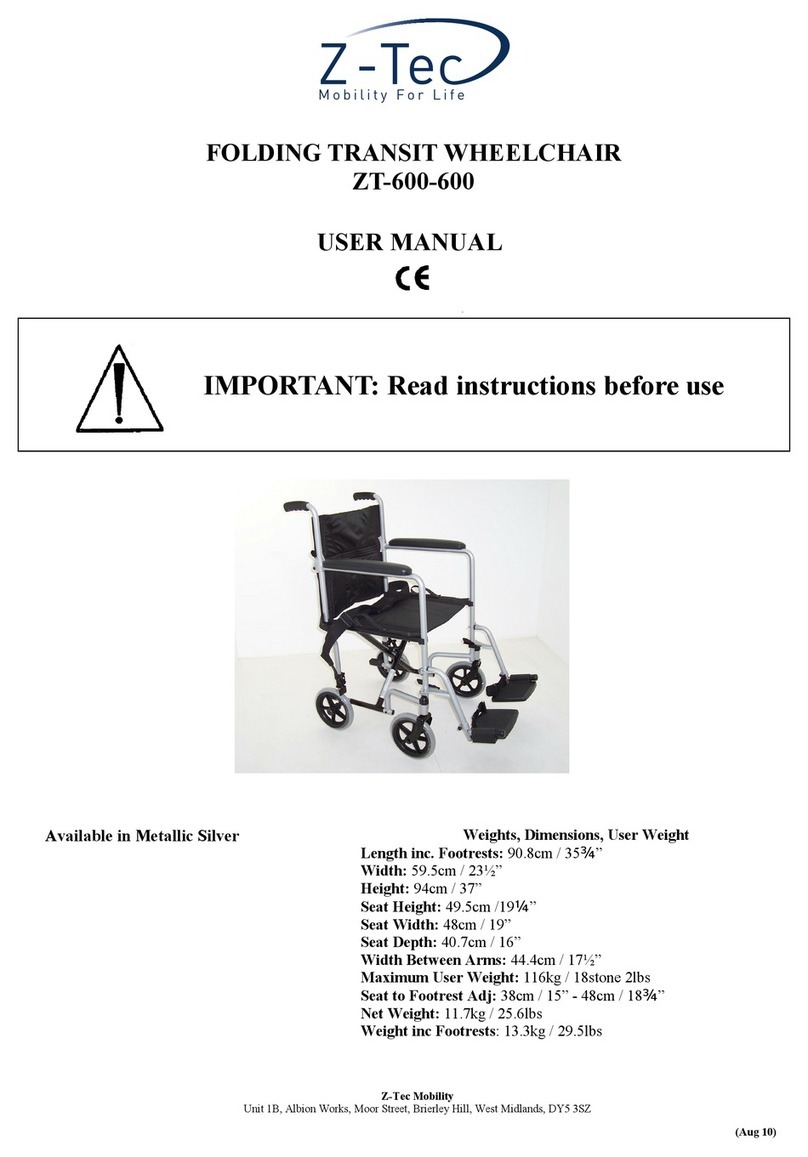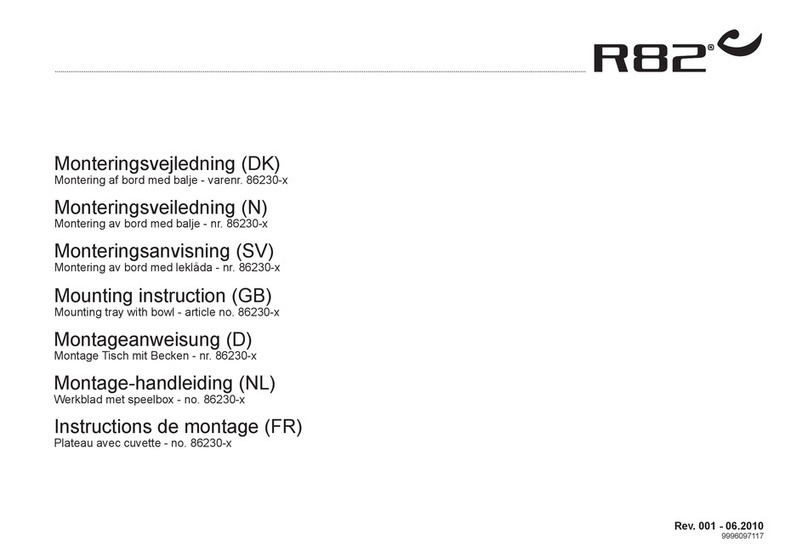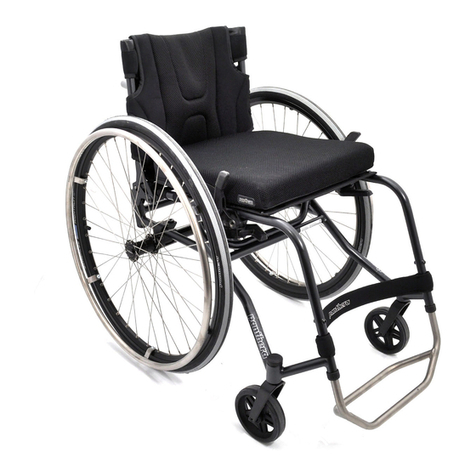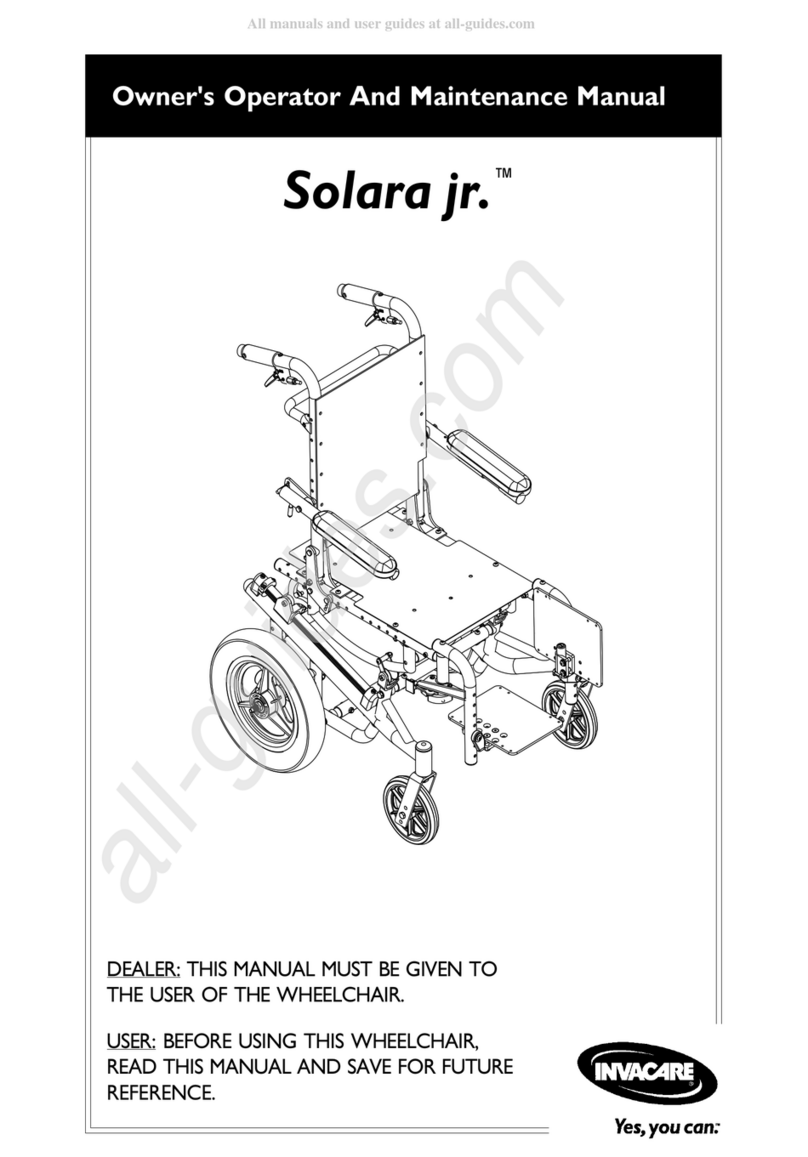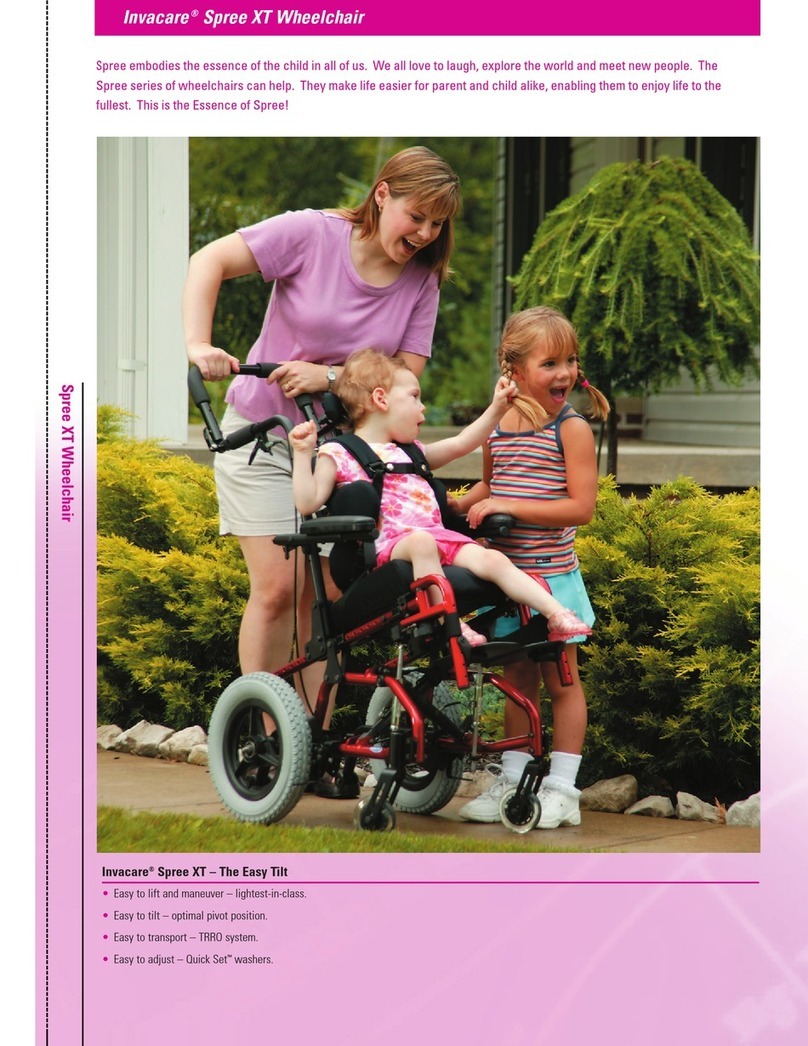
QuantumR-4000Series www.pridemobility.com 11
II. SAFETY
Weight Limitations
Yourpower chairisratedfor amaximumweightcapacity.Please refertothespecifications tableforthislimit.
MANDATORY! Stay within the specified weight capacity of your power chair. Exceeding the weight
capacity voids your warranty. Pride will not be held responsible for injuries and/or property damage
resulting from failure to observe weight limitations.
WARNING! Do not carry passengers on your power chair. Carrying passengers on your power
chair may affect the centre of gravity, resulting in a tip or a fall.
Tyre Inflation
Ifyourpowerchairisequippedwithpneumatictyres,you shouldcheckorhavetheair pressurecheckedregularly.Proper
inflationpressureswill prolongthelifeofyourtyresandhelpensure thesmoothoperationof yourpowerchair.
WARNING! It is important that the psi/bar/kPa air pressure rating indicated on the tyre be maintained
in pneumatic tyres at all times. Do not underinflate or overinflate your tyres. Low pressure may
result in loss of control, and overinflated tyres may burst. Failure to maintain the psi/bar/kPa air
pressure rating indicated on the tyres at all times may result in tyre and/or wheel failure.
WARNING! Inflate your power chair drive tyres from a regulated air source with an available
pressure gauge. Inflating your tyres from an unregulated air source could overinflate them, resulting
in a burst tyre.
WARNING! When changing a tyre, remove only the centre lug nuts, then remove the wheel. If any
further disassembly is required, deflate the tyre completely or it may explode.
NOTE: If the tyres on your power chair list the psi rating only, use the following conversion formulas to find
the bar or kPa rating: bar = psi x 0.06895; kPa = psi x 6.89476.
Incline Information
Moreandmorebuildingshaverampswithspecifieddegreesofinclination,designedfor easyandsafeaccess.Some ramps
mayhaveturning switchbacks(180-degreeturns) thatrequireyou tohavegood corneringskillson yourpowerchair.
!Proceedwith extremecaution asyouapproach thedowngrade ofa rampor otherincline.
!Take wideswingswithyourpowerchair’s frontwheelsaroundanytightcorners. Ifyoudothat,thepower chair’srear
wheelswill followawide arc,notcut thecornershort, andnotbump intoorgethungup onanyrailing corners.
!When driving down a ramp, keep the power chair’s speed adjustment set to the slowest speed setting to ensure a
safelycontrolleddescent.
!Avoid suddenstops and starts.
Whenclimbinganincline,trytokeepyourpower chairmoving. Ifyoumuststop,startupagainslowlyandthenaccelerate
cautiously.When driving down an incline, set your power chair to the slowest speed setting and drive in the forward
directiononly.If yourpowerchairstarts tomovedown theinclinefasterthan youanticipatedordesired,allowitto come
toacomplete stopbyreleasing thejoystick,then pushthejoystick forwardslightlyto ensureasafely controlleddescent.
WARNING! When on any sort of an incline or decline, never place the power chair in
freewheel mode, especially while seated on it or standing next to it.
WARNING! When climbing an incline, do not zigzag or drive at an angle up the face of
the incline. Drive your power chair straight up the incline. This greatly reduces the
possibility of a tip or a fall. Always exercise extreme caution when negotiating an incline.
WARNING! You should not travel up or down a potentially hazardous incline (i.e., areas
covered with snow, ice, cut grass, or wet leaves).
WARNING! Never travel down an incline rearward. Doing so may cause the power
chair to tip. Always exercise extreme caution when negotiating an incline.




















